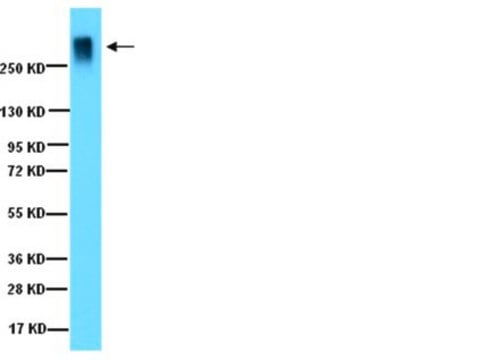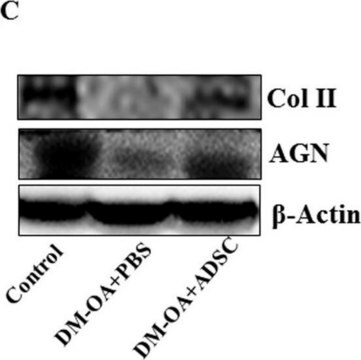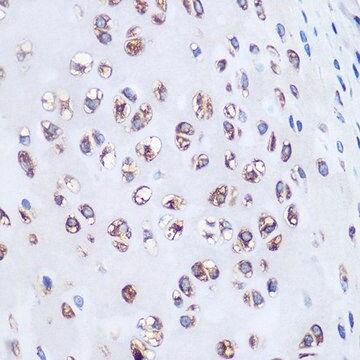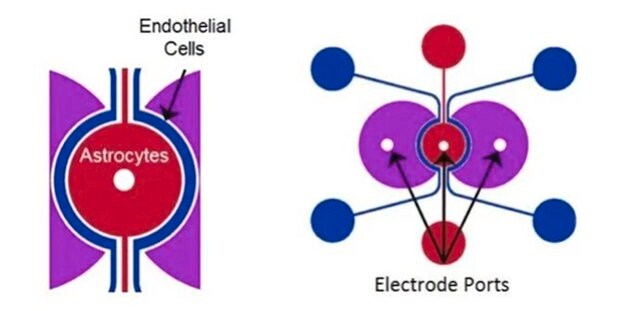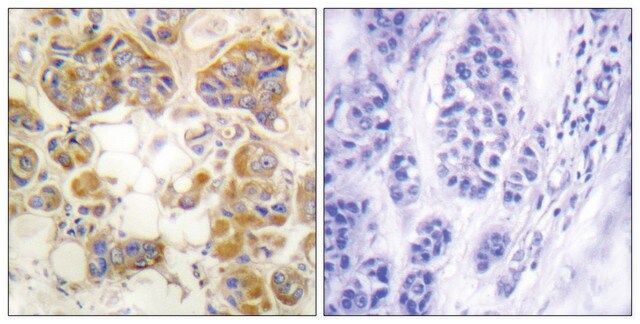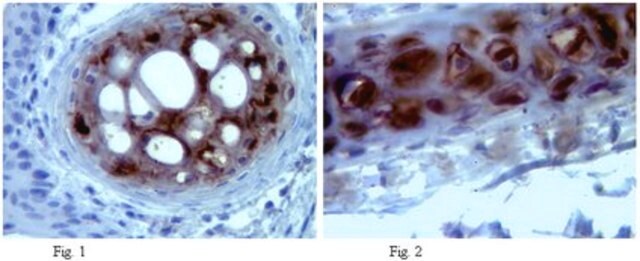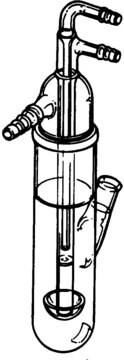ABT1373M
Anti-Aggrecan
serum, from rabbit
Synonyme(s) :
Aggrecan core protein, Cartilage-specific proteoglycan core protein, CSPCP
About This Item
RIA
WB
radioimmunoassay: suitable
western blot: suitable
Produits recommandés
Source biologique
rabbit
Niveau de qualité
Forme d'anticorps
serum
Type de produit anticorps
primary antibodies
Clone
polyclonal
Espèces réactives
rat
Conditionnement
antibody small pack of 25 μL
Technique(s)
immunohistochemistry (formalin-fixed, paraffin-embedded sections): suitable
radioimmunoassay: suitable
western blot: suitable
Isotype
IgG
Numéro d'accès NCBI
Numéro d'accès UniProt
Modification post-traductionnelle de la cible
unmodified
Informations sur le gène
rat ... Ncan(58982)
Description générale
Spécificité
Immunogène
Application
Immunohistochemistry Analysis: A representative lot detected Aggrecan in Embryonic day 16 rat eye, P0, P9 and adult rat retina (Popp, S., et. al. (2004). Exp Eye Res. 79(3):351-6) and Embryonic day 16, 19 rat brain and postnatal day 7 cerebellum, embryonic day 19 spinal cord (Popp, S., et. al. (2003). Dev Dyn. 227(1):143-9).
Western Blotting Analysis: A representative lot detected Aggrecan in purified proteoglycans from a PBS extract of 7-day rat brain with chondroitinase ABC treatment (Popp, S., et. al. (2003). Dev Dyn. 227(1):143-9).
Cell Structure
Qualité
Immunohistochemistry Analysis: A 1:250 dilution of this antibody detected Aggrecan in rat retina tissue.
Description de la cible
Forme physique
Stockage et stabilité
Autres remarques
Clause de non-responsabilité
Vous ne trouvez pas le bon produit ?
Essayez notre Outil de sélection de produits.
Code de la classe de stockage
10 - Combustible liquids
Classe de danger pour l'eau (WGK)
WGK 1
Certificats d'analyse (COA)
Recherchez un Certificats d'analyse (COA) en saisissant le numéro de lot du produit. Les numéros de lot figurent sur l'étiquette du produit après les mots "Lot" ou "Batch".
Déjà en possession de ce produit ?
Retrouvez la documentation relative aux produits que vous avez récemment achetés dans la Bibliothèque de documents.
Notre équipe de scientifiques dispose d'une expérience dans tous les secteurs de la recherche, notamment en sciences de la vie, science des matériaux, synthèse chimique, chromatographie, analyse et dans de nombreux autres domaines..
Contacter notre Service technique